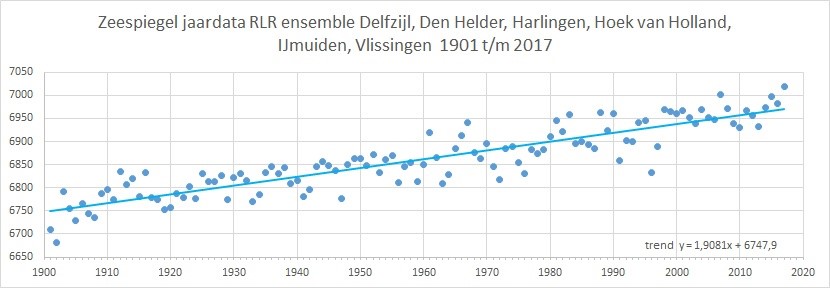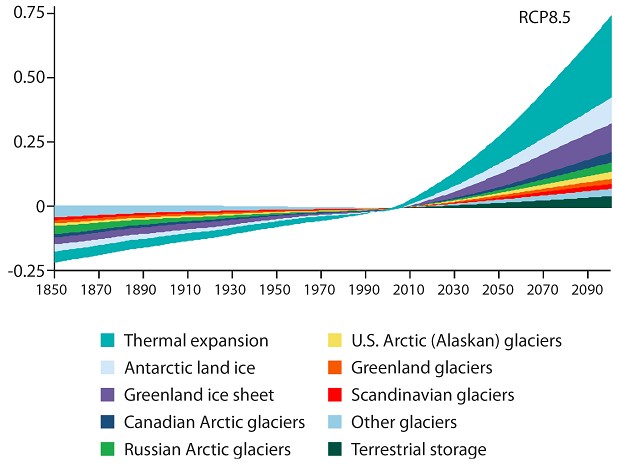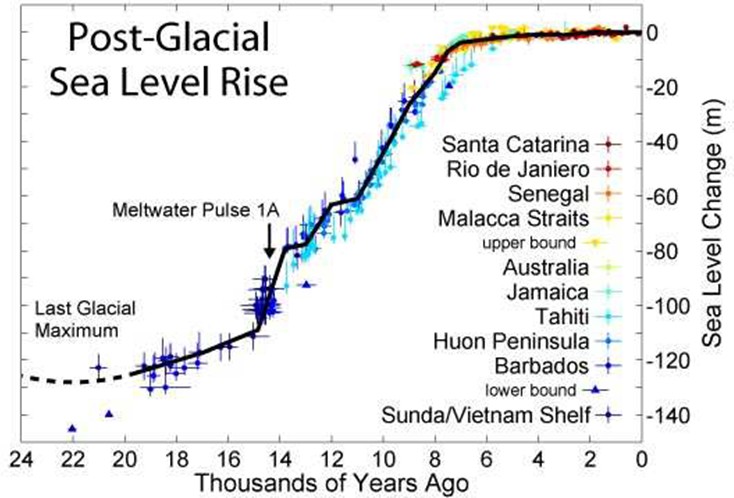

EEN NIEUWE AARDSE THERMOMETER

|
||
|

EEN NIEUWE AARDSE THERMOMETER
|

Samenvatting
|

Abstract
|
|
Fig. 1 
|
|
De dienst presenteerde in 2008 een eerdere versie van deze data op zijn webstek vergezeld van de verzuchting dat ze "tot hun spijt" geen snellere stijging konden melden (!). De gemeten trend stijging is ~19 cm/eeuw. Dat is elders anders. In Zweden en Finland daalt de zeespiegel. De Zweden moeten de Noordelijke havens gaan uitbaggeren omdat ze te ondiep worden. De ijzerexport loopt gevaar.
|
In 2008, the same agency presented an earlier version of these data on its website. It added a sincere excuse. They were sorry not to be able to report a stronger rise of the sea level (!). The measured increase is ~19 cm/century. In other places the rise is not the same. In Sweden and Finland the sea level is falling. The Swedes have to dredge their Northern ports, because they are becoming too shallow. The iron exports are getting in jeopardy. |
|
Fig.2  |
Het is afkomstig van het IPCC (Graph: Figure 9.7 in SWIPA 2017)
|
It was copied from the IPCC (Graph: Figure 9.7 in SWIPA 2017) (RCP8.5)
|
|
Fig.3 
|
Regeringen van de koraaleilanden in de Grote Oceaan vragen in de Verenigde Naties geld van de rijke landen om de schade te beperken. Het is een inkomstenbron. Met hulp van de Australische regering zijn waarnemingsstations geplaatst. Het resultaat toonde ik eerder al eens.
in de passage over zeeniveau. Er is daar geen reden tot zorg; de koralen groeien hard genoeg.
De toevlucht tot het gebruik van gemiddelden voor de parameters ( diepte van het participerende oceaan deel en uitzettingscoëfficiënt ) in formules is altijd een noodgreep. In feite zouden we voor elke kubieke meter van de oceaan de condities moeten kennen en die integreren. Dat is ondoenlijk. Door gebruik te maken van de ARGO gegevens en met behulp van 'big data' analyse zou vermoedelijk met acceptabele naukeurigheid een bruikbaar resultaat kunnen worden verkregen. ( Ook enige controle op de zeespiegel stijging van 24 cm/eeuw minus 19 cm/eeuw (= 5 cm/eeuw) voor de ijs-smelt is niet overbodig. )
D(t) = (1 + γ.ΔT)D0 dT/dt = 0,05/(γ.D) De berekening staat in onderstaande tabel voor enkele waarden van de gemiddelde diepte en die van de gemiddelde temperatuur (waarvoor we de bijbehorende waarde van γ gebruiken, die we afleidden uit de waterdichtheid). |
Governments of the coral islands in the Pacific Ocean are demanding money from the rich countries in the United Nations to limit the damage. It is a source of income.
The escape to the use of averages for the parameters ( depth of participating part of the ocean and expansion coefficient) in formulas is always an emergency step. In fact, we should know the conditions for each cubic meter of the ocean and integrate them. That is impossible. By using the ARGO data and by means of 'big data' analysis, a useful result could probably be obtained with acceptable accuracy. ( Also, some control of the sea level rise of 24 cm/century minus 19 cm/century ( = 5 cm/century ) for the ice-melt is not superfluous. ) Keeping these flaws in mind, the calculation is simple straight forward.
D(t) = (1 + γ.ΔT)D0 dT/dt = 0,05/(γ.D)
|
Tabel ΔT per eeuw bij 0,05 m/eeuw zeespiegel stijging door thermische expansie.
|
|
Bij een gemiddelde oceaan diepte: 1500 m < D < 3500 m en een gemiddelde oceaan temperatuur 16 °C < T < 24 °C wijst de aardse thermometer op een temperatuur stijging van de oceaan: Indien er minder landijs ijs smelt bij een zelfde zeespiegelstijging, waardoor de bijdrage van de uitzetting van het water niet 0,05 maar 0,1 m/eeuw is, is bij dezelfde grenzen aan de gemiddelde watertemperatuur: 16 & 24 °C en nauwere grenzen van de zeediepte: 1500 & 2500 m de temperatuurstijging:
|
At an average ocean depth of 1500 m< D <3500 m and an average temperature of 16 °C < T <24 °C, the earthly thermometer indicates a temperature rise of the ocean:
This article appeared simultaneously on Principia Scientific International. |
|
C. (Kees) le Pair
|